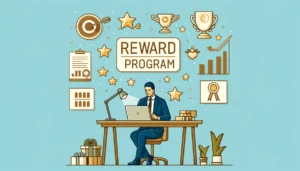HRD Roundtable Report: Achieving Business Transformation through Employee Listening, Experience and Engagement
- 8 Min Read
The following report captures some of the valuable discussion and ideas generated during a recent virtual roundtable between senior HR and talent leaders, led by Igor Lubawinski, Director Employee Engagement, Delivery Hero, and joined by Arjen Swank, Senior Engagement Specialist, Effectory. It was conducted under Chatham House Rules to encourage an open sharing of experiences, […]
- Event Types
- Date of Event: May 5, 2022


The following report captures some of the valuable discussion and ideas generated during a recent virtual roundtable between senior HR and talent leaders, led by Igor Lubawinski, Director Employee Engagement, Delivery Hero, and joined by Arjen Swank, Senior Engagement Specialist, Effectory. It was conducted under Chatham House Rules to encourage an open sharing of experiences, and so no names or organisations will be included.
Employee experience and engagement is consistently ranked as one of the top priorities for HR and business leaders around the globe. Yet many organisations still find they are not attuned to the thoughts and feelings of their people – they haven’t achieved a feedback culture that feeds into the employee experience strategy and therefore the wider plans of the business. How can we better capture the employee experience to find the opportunities to drive impactful change?
What does experience mean to us?
Experience is all about how you make people feel. It’s what makes people want to contribute to the company and drives their engagement. It’s important to think of the employee (and candidate) experience the way we would a customer experience – the company is a product and if you have a bad experience, you are less likely to go again, or create a loyalty.
If we engage with people in the right way, we should be able to feel, hear and understand what people actually come across in their day to day. The experience that employees have isn’t just what we say our culture is. It should bring that culture to life.
If experience is rooted in emotion, then how do we encourage the right emotions? It’s actually quite difficult to fully divorce emotion from work and in some organisations, emotion is always going to be a huge driver. In education for example, people are often driven by the desire to make a difference in the lives of children – this desire can overcome a lot of negative experiences as the end result is felt to be worth it.
For less vocational industries however the link can feel a lot more limited, with drivers like purpose and CSR feeling more like tick-box exercises. So how do you close this circle? The group shared a few examples of where they had found some success, including a culture programme where leaders were encouraged to join an unfreezing workshop. This workshop looked at the gap between the aspirational culture they wanted to achieve, and the actual day-to-day experiences of the teams. These leaders can then be ambassadors for the change and culture they want to see.
Another participant shared their strategy of making their organisation like a family, though they admitted that they don’t always get it right. It can be a tricky balance – you want people to feel they belong, are valued and trusted, but don’t wan to overstep into blurring personal and work.
How do we listen?
How do we create the space to listen and understand the experience and culture of our organisation? Within an organisation there may even be several ‘cultures’ co-existing depending on the dynamics of different teams. Creating an experience that is valuable is impossible when you don’t know what people want!
Many organisations simply aren’t that connected – industries like manufacturing, logistics or hospitality, where employees don’t work in offices on computers can struggle. Their people don’t have work email addresses or phone numbers, how can they stay in touch and listen? One participant discussed how previously they conducted surveys on paper as this was the only way to reach people. In the past 10 years however they’ve refreshed their approach, actually asking their people use their personal kit to complete an annual survey, and more recently have started doing monthly surveys with individual communities within their organisation. This sample approach means they can hear more frequently, without overwhelming with a monthly survey for everyone. They also noted the value in the support they received from the trade unions in making this happen. Trade unions traditionally can be a bit of a barrier as they want to own that feedback relationship but working on it together should have the goal of richer information and hopefully better experiences for everyone.
The ideal frequency is hard to pin down. Many organisations still do annual surveys, but particularly when we think about how rapid the changes of the last few months have been, is that enough? Are we really on the pulse? As one participant put it, if you only ask your partner how they’re feeling once a year, it’s probably time to re-evaluate that relationship. Annual surveys are just one moment in time.
On the other hand, how do we ensure we don’t check in too often? It’s easy for people to get bored or frustrated with too many checks. The group had a couple of mechanisms for getting in touch more often – one participant uses Sli.do, which allows employees to get in touch and ask the questions. Alternatively, you can ask one daily question – how are you feeling or which smiley face are you? Something very quick, that doesn’t take much time or thought to answer.
Creating a dialogue and building ownership
More important than just asking, is making sure people feel heard.
One participant for example shared that they actually felt they were doing too many surveys, so returned to just one or two a year. However, they put a great emphasis on returning to the survey results several times a year and communicating clearly on their plans. This includes communicating what they are not able to address immediately and why. If the results aren’t what management wants to hear, we need to deal with it and share anyway. This communication is owned by the MD of each part of the organisation – they are closest to their people, so can communicate in a way that is more personal and authentic than a leader that is more removed.
Some ideas shared to increase the dialogue aspect included simple follow up questions for the next surveys – literally as simple as ‘did you see changes made to what you mentioned last time’? It signals to be that the business actually cares about the results, as well as a way of rating your own follow-up commitment. Other ways of making consistent involvement with surveys is to rethink how we frame them. ‘Survey’ feels old school – one participant calls theirs a ‘Happiness Index’.
On the more formal side of ownership, one participant shared their development of a dedicated function – Organisational Effectiveness and Colleague Experience. This function owns all the internal comms, listening and engagement strategies and means all the messaging is informed and well aligned.
Leaders need to be encouraged to really live the values of listening and curiosity. If someone comes to them with an idea or feedback, they need to be encouraged, not shut down. This drives a listening culture outside of the formal processes. HR understands the value in this, but have we helped managers connect the dots on the importance of playing their part?
The group discussed how HR can sometimes be siloed in their approach, but that something like engagement really does need wider support. One participant shared how their role actually sits at the crossroads between HR, IT and wider leadership – they all have to talk together to work. Moreover, just data can only tell us so much. We have to be asking the right questions and be interested in the things that are hard to measure, like the moments that matter. Different teams will have the best tools and skills for this, not just HR.
Final thoughts
There was plenty of different threads raised by the group that we unfortunately did not have time to explore further. For example, how do we design the specifics of a survey – what should we be measuring/listening for? How do we improve experience across very different workplaces? Is there a way of making engagement feel organic, and part of the day to day? Engagement and experience play such a broad role in the workplace, there’s still much to work on.
One consensus we were able to come to though, is that a survey is only useful if you show all employees that their inputs were relevant, by taking visible actions from the insights shared and communicating that back to your pople. The structures we build for business can be some of the biggest blockers for engagement, and we can find reasons to say no, instead of exploring ew ideas. Leadership needs to step up to exemplify the listening culture that we say we want, in their day to day. Ownership needs to be cross-functional, not just a ‘HR thing’.








